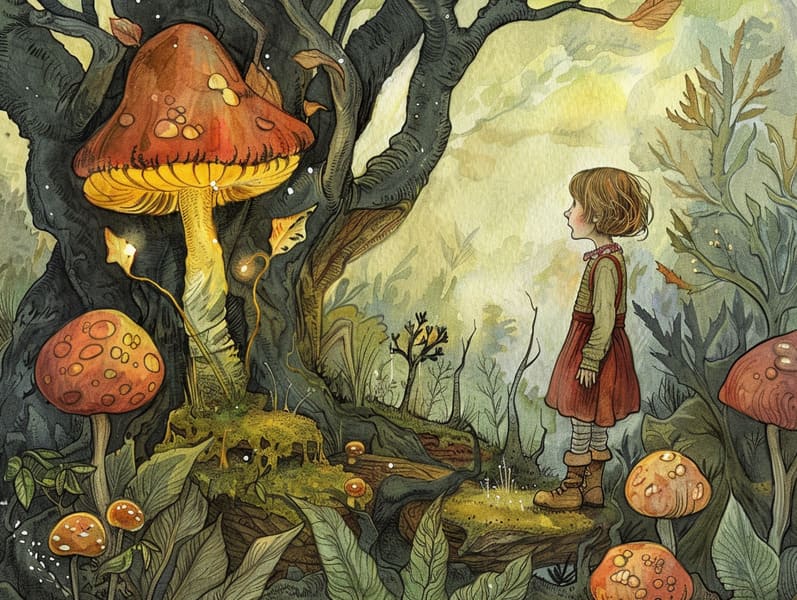The Birth of Famous Fairy Tales with Its Undying Grandeur.
The Birth of Famous Fairy Tales with Its Undying Grandeur.
Blog Article

Famous fairy tales have long histories. These narratives have been conveyed from one generation to the next ages before they were ever put on paper. They arose from a variety of traditions, including Western traditions. They were initially passed along among elders, often carrying themes and messages mirroring the societal norms and beliefs of the time.
Jacob and Wilhelm Grimm, Jacob and Wilhelm, were among the first to collect and release many of these beloved narratives. Their published works, "Grimm's Story Collection," included stories like "Ashenputtel," "Little Brother and Little Sister," and "Schneewittchen," which have since become mainstays in the world of children's fairy tales. Similarly, the Danish author's delightful narratives, such as "The Mermaid's Tale," and "The Duckling that Could," have won hearts worldwide, guaranteeing their place in the pantheon of classic fairy tales.
Though they are old, these stories remain as impactful as ever, especially as children's night stories. These enchanting tales are now available in diverse formats, including gorgeously illustrated books, whimsical animations, and online fairy tales.
Their unwavering allure can be credited to several enchanting factors:
Moral Lessons: Traditional fairy tales often illustrate important moral lessons. Tales like "The Tale of the Boy Who Cried Wolf" teach the virtue of honesty, while "The Tortoise and the Hare" illustrate the benefits of determination and meekness. These narratives offer the young clear distinctions between correct and incorrect, molding their moral compass in a gentle yet lasting way.
Sympathy and Perception: Classic fairy tales frequently portray heroines facing challenges and problems, fostering audiences to identify with their struggles and encourage their triumphs. For instance, "The Tale of Beauty and the Beast" points out the benefit of seeing beyond the surface to comprehend the real character of a character, promoting perception and discernment.
Cultural Insights: Many old fairy tales are deeply ingrained in the cultural contexts from which they emerged. Immersing in these tales can provide captivating looks into different traditions, nurturing a sense of cultural awareness and recognition.
Creativity and Imagination: The extraordinary elements in timeless fairy tales—mythical entities—boost children’s creative thoughts. These narratives move readers to enchanted realms, provoking imaginative ideas and a sense of marvel that continues a lifetime.
Old fairy tales are not only whimsical but also teaching. They serve as captivating tools in promoting various cognitive and affective skills in young readers. When traditional fairy tales are read aloud, they strengthen verbal development by showing new phrases and elaborate sentence structures. This practice also boosts hearing perception and mindfulness, as young readers stay focused, expectant to see what happens next.
Furthermore, deliberating the themes and characters of old fairy tales can develop logical thinking and logical thinking. Kids are educated to detect patterns, predict happenings, and realize cause and effect. These discussions also ease the young say their thoughts and feelings, adding to their emotional intelligence.
In today’s technological age, the presence of digital storybooks has made these narratives more reachable than ever. Online resources and digital apps give wide arrays of children's fairy tales that can be experienced or heard anytime, anywhere. Fairy tales spoken are particularly prevalent, providing an charming way for the young to engage with these whimsical stories. Voice books and read-to-me stories move characters and settings to life, often supported by enchanting soundtracks and soundtracks that heighten the story journey.
The timeless allure of old fairy tales lies in their ability to adapt to today's world while keeping hold of their core messages. Contemporary revisions of these narratives often show more inclusive characters and modern settings, making them accessible to today’s audience. However, the core values of gallantry, humanity, and fair play remain unchanged, continuing to affect listeners of all ages.
Traditional fairy tales also offer a sense of coziness and familiarity. They provide a ordered narrative with a plain beginning, middle, and end, often closing with the settlement of conflicts and the triumph of good over bad. This uniformity can be solacing for the young, granting a sense of steadfastness in an inconstant world.
Classic fairy tales continue to enthrall and coach new generations, maintaining their mystique and impact in modern society. As awesome site nighttime stories for kids, they afford a perfect blend of magic and knowledge, boosting moral values, empathy, and creativity. The abundance of online fairy tales and the likability of fairy tales narrated promise that these ancient narratives remain acquirable to new generations.
By upholding and spreading these narratives, we continue to cherish the rich tapestry of narrative artistry and cultural heritage. Whether you are viewing a vividly illustrated book, browsing a electronic library, or playing an narrated book, the captivation of old fairy tales is always within reach. These tales highlight of the perpetual effect of fairy tales and its ability to bind us across eras and regions.
If you are delving into a artistically illustrated book, browsing a web collection, or playing an spoken story, the magic of timeless fairy tales is always within reach.
These stories demonstrate of the unceasing influence of fairy tales and its ability to join us across epochs and places, casting a charm that delights and instructs alike.